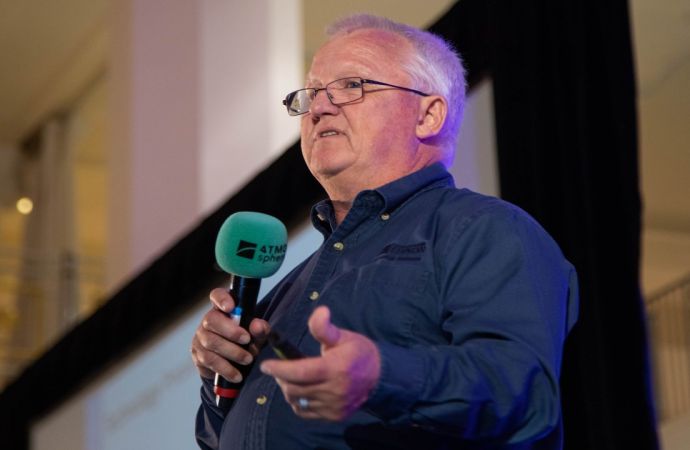Ammonia is a highly interesting but also still poorly understood option to replace HCFCs in developing countries, reactions at an international Montreal Protocol meeting in Bangkok showed. A comprehensive report now updates on projects and organizations promoting natural refrigerants at this key event.

“Until recently, the voice of the fluorocarbon industry has been heard much more loudly and forcefully within the Montreal process than the voice of those calling for genuinely sustainable solutions. As a result, many of the parties and participants are simply unaware of the potential of natural refrigerants, and the tangible results being achieved on the ground,” Brent Hoare from the Green Cooling Council (GCC) outlined reactions among participants of the 28th Working Group meeting of Montreal Protocol Parties held in Bangkok on 7-11 July.
The quote, taken from a summary report about major side events and presentations in Bangkok focusing on natural refrigerants, thus insists that still more communication is needed to convince decision makers in developing countries of the substantial benefits that using ammonia and other natural refrigerants in next-generation refrigeration will hold for them. Like the Green Cooling Council, a record number of non-governmental organizations, including Greenpeace and the Environmental Investigation Agency (EIA), gathered in Bangkok to also warn participants that switching from ozone-depleting substances to high global warming HFCs could counteract already achieved progress in climate protection. Presenting real-life examples of energy-efficient NH3 installations was therefore the best way to avoid a prolonged use of fluorocarbons justified by its proponents on the basis of higher energy efficiency claims.
Ammonia refrigeration & solar ice maker
CO2/NH3 refrigeration is gaining popularity in hot climates, and more specifically in Australia, the Green Cooling Council confirmed in its presentation about viable technologies using natural refrigerants. GGC hence highlighted ammonia as a highly sustainable replacement for R404a currently used in a majority of Australian cascade systems. Brent Hoare referred to UK retail chain Tesco that has already publicly announced to use CO2-NH3 in new stores. He also presented an ammonia ISAAC solar ice maker, using a parabolic trough solar collector and a compact design to produce ice without any fuel or electric input. The system operates in two modes: during the day, solar energy is used to generate liquid ammonia refrigerant; during night, the generator is cooled by a thermosyphon and ice is formed in the evaporator compartment as NH3 is reabsorbed to the generator.
Other practical examples how ammonia, carbon dioxide, or hydrocarbons could be used as alternatives to HCFCs and HFCs were presented by Greenpeace which highlighted ammonia applications in commercial enterprises, such as the international space shuttle, the Copenhagen airport, and several trade fair centres in Germany.
Montreal process: Priority given to minimum-impact alternatives
The NGO’s call for truly sustainable cooling options was supported by a major paper* acknowledging the significant contribution of the Montreal Protocol – originally meant to phase out ozone-depleting substances (ODS) – to a worldwide reduction of greenhouse gas emissions. The publication was followed by Montreal Decision XIX/6 which encouraged all countries “…to promote the selection of alternatives to HCFCs that minimize environmental impacts, in particular impacts on climate”. As a consequence, the Multi Lateral Fund (MLF) – the body funding particular projects to phase out ODS - must now give priority to projects and programmes focusing on “…alternatives that minimise other impacts on the environment including on the climate, taking into account global warming potential, energy use and other relevant factors”. These developments have put back the spotlight on projects involving natural refrigerants.
**Guus J. M. Velders, et. al., The importance of the Montreal Protocol in protecting climate, 104 PROCEEDINGS OF THE NATIONAL ACADEMY OF SCIENCES 4814 (2007). http://www.pnas.org/cgi/content/abstract/0610328104v1
The quote, taken from a summary report about major side events and presentations in Bangkok focusing on natural refrigerants, thus insists that still more communication is needed to convince decision makers in developing countries of the substantial benefits that using ammonia and other natural refrigerants in next-generation refrigeration will hold for them. Like the Green Cooling Council, a record number of non-governmental organizations, including Greenpeace and the Environmental Investigation Agency (EIA), gathered in Bangkok to also warn participants that switching from ozone-depleting substances to high global warming HFCs could counteract already achieved progress in climate protection. Presenting real-life examples of energy-efficient NH3 installations was therefore the best way to avoid a prolonged use of fluorocarbons justified by its proponents on the basis of higher energy efficiency claims.
Ammonia refrigeration & solar ice maker
CO2/NH3 refrigeration is gaining popularity in hot climates, and more specifically in Australia, the Green Cooling Council confirmed in its presentation about viable technologies using natural refrigerants. GGC hence highlighted ammonia as a highly sustainable replacement for R404a currently used in a majority of Australian cascade systems. Brent Hoare referred to UK retail chain Tesco that has already publicly announced to use CO2-NH3 in new stores. He also presented an ammonia ISAAC solar ice maker, using a parabolic trough solar collector and a compact design to produce ice without any fuel or electric input. The system operates in two modes: during the day, solar energy is used to generate liquid ammonia refrigerant; during night, the generator is cooled by a thermosyphon and ice is formed in the evaporator compartment as NH3 is reabsorbed to the generator.
Other practical examples how ammonia, carbon dioxide, or hydrocarbons could be used as alternatives to HCFCs and HFCs were presented by Greenpeace which highlighted ammonia applications in commercial enterprises, such as the international space shuttle, the Copenhagen airport, and several trade fair centres in Germany.
Montreal process: Priority given to minimum-impact alternatives
The NGO’s call for truly sustainable cooling options was supported by a major paper* acknowledging the significant contribution of the Montreal Protocol – originally meant to phase out ozone-depleting substances (ODS) – to a worldwide reduction of greenhouse gas emissions. The publication was followed by Montreal Decision XIX/6 which encouraged all countries “…to promote the selection of alternatives to HCFCs that minimize environmental impacts, in particular impacts on climate”. As a consequence, the Multi Lateral Fund (MLF) – the body funding particular projects to phase out ODS - must now give priority to projects and programmes focusing on “…alternatives that minimise other impacts on the environment including on the climate, taking into account global warming potential, energy use and other relevant factors”. These developments have put back the spotlight on projects involving natural refrigerants.
**Guus J. M. Velders, et. al., The importance of the Montreal Protocol in protecting climate, 104 PROCEEDINGS OF THE NATIONAL ACADEMY OF SCIENCES 4814 (2007). http://www.pnas.org/cgi/content/abstract/0610328104v1
MORE INFORMATION
Related stories




